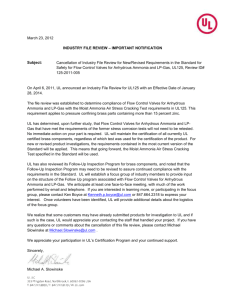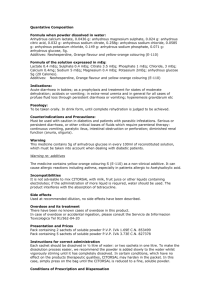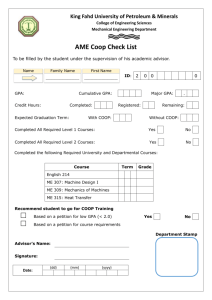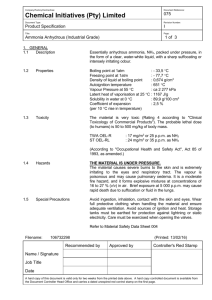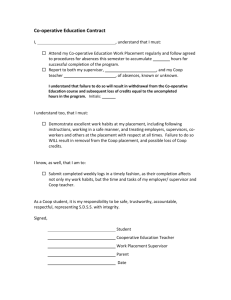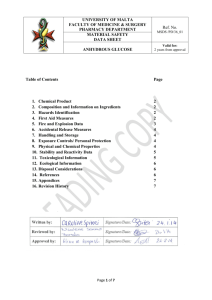Anhydrous Ammonia Sales
advertisement
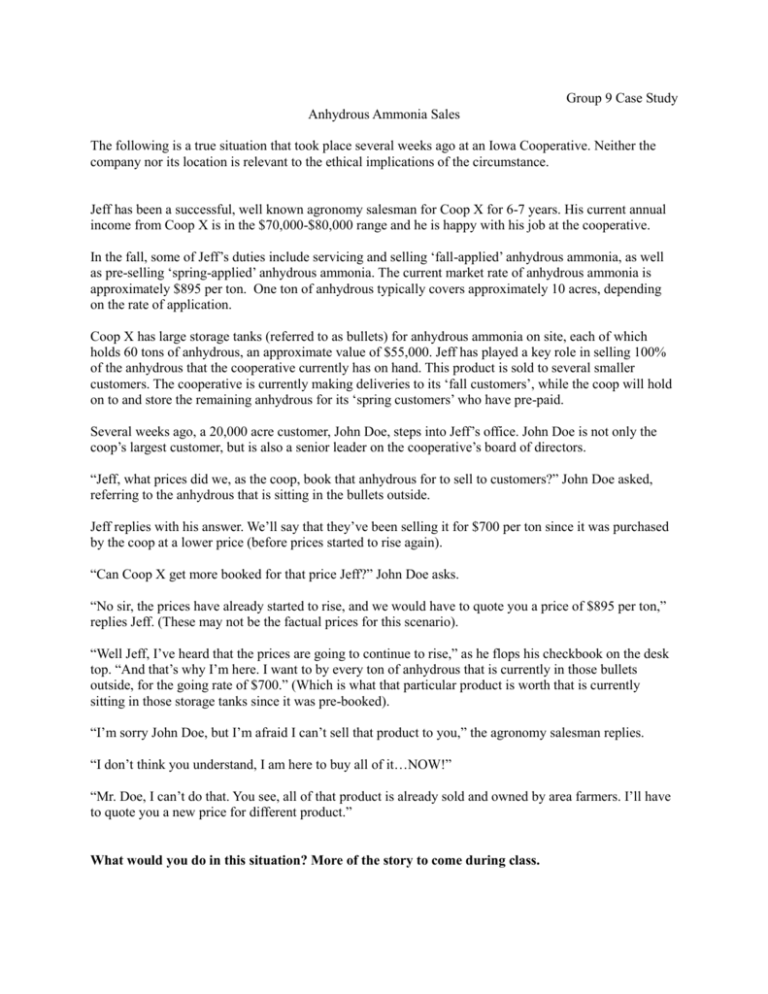
Group 9 Case Study Anhydrous Ammonia Sales The following is a true situation that took place several weeks ago at an Iowa Cooperative. Neither the company nor its location is relevant to the ethical implications of the circumstance. Jeff has been a successful, well known agronomy salesman for Coop X for 6-7 years. His current annual income from Coop X is in the $70,000-$80,000 range and he is happy with his job at the cooperative. In the fall, some of Jeff’s duties include servicing and selling ‘fall-applied’ anhydrous ammonia, as well as pre-selling ‘spring-applied’ anhydrous ammonia. The current market rate of anhydrous ammonia is approximately $895 per ton. One ton of anhydrous typically covers approximately 10 acres, depending on the rate of application. Coop X has large storage tanks (referred to as bullets) for anhydrous ammonia on site, each of which holds 60 tons of anhydrous, an approximate value of $55,000. Jeff has played a key role in selling 100% of the anhydrous that the cooperative currently has on hand. This product is sold to several smaller customers. The cooperative is currently making deliveries to its ‘fall customers’, while the coop will hold on to and store the remaining anhydrous for its ‘spring customers’ who have pre-paid. Several weeks ago, a 20,000 acre customer, John Doe, steps into Jeff’s office. John Doe is not only the coop’s largest customer, but is also a senior leader on the cooperative’s board of directors. “Jeff, what prices did we, as the coop, book that anhydrous for to sell to customers?” John Doe asked, referring to the anhydrous that is sitting in the bullets outside. Jeff replies with his answer. We’ll say that they’ve been selling it for $700 per ton since it was purchased by the coop at a lower price (before prices started to rise again). “Can Coop X get more booked for that price Jeff?” John Doe asks. “No sir, the prices have already started to rise, and we would have to quote you a price of $895 per ton,” replies Jeff. (These may not be the factual prices for this scenario). “Well Jeff, I’ve heard that the prices are going to continue to rise,” as he flops his checkbook on the desk top. “And that’s why I’m here. I want to by every ton of anhydrous that is currently in those bullets outside, for the going rate of $700.” (Which is what that particular product is worth that is currently sitting in those storage tanks since it was pre-booked). “I’m sorry John Doe, but I’m afraid I can’t sell that product to you,” the agronomy salesman replies. “I don’t think you understand, I am here to buy all of it…NOW!” “Mr. Doe, I can’t do that. You see, all of that product is already sold and owned by area farmers. I’ll have to quote you a new price for different product.” What would you do in this situation? More of the story to come during class.
